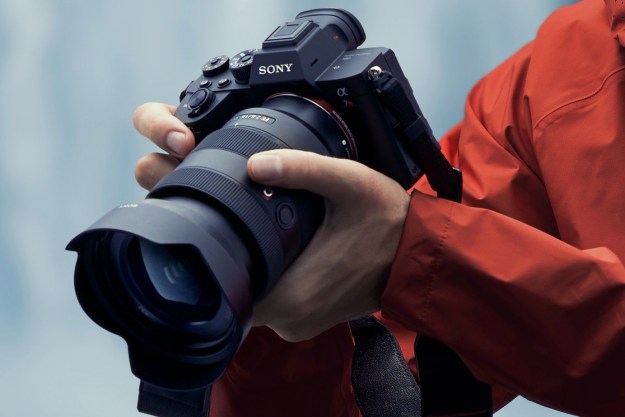Updated on September 15, 2015: Today, Sony announced the A7S II will support compressed and uncompressed 14-bit RAW image capture. Although the camera was unveiled on September 11, the company didn’t reveal this new capability until now. The user-selectable function will be available when the camera goes on sale in October. Sony says 14-bit uncompressed RAW capture has been widely requested by users, which delivers higher quality images.
In addition, the A7R II will also get the new feature via a firmware update. Sony has yet to determine when that will happen.
Original article: Continuing its “Mark II” rollout of its Alpha A7-series full-frame mirrorless cameras, Sony introduced the A7S II ($3,000, body only). The original A7S was known for its 4K video capture (via external recorder) and high ISO sensitivity of 409,600 for super low-light performance. The new Mark II adds 5-axis image stabilization (introduced in the A7 II), and 4K is now recorded internally to the memory card (using Sony’s XAVC S codec) with full pixel readout and no pixel binning, and it can record Full HD at 120 frames per second (fps) at 100 megabits per second (Mbps). As for the latter, Sony says this is the first camera in the world to offers this feature, although technically Sony’s 4K-capable Cyber-shot and Action Cam models have this feature as well.
“The camera’s unique balance of sensitivity, control of plane of focus, and incredible image quality make it an especially effective tool for videographers and filmmakers,” Sony says in a release.
While all the A7 models have video-recording capabilities, the A7S variant seems to be designed with videographers in mind (the original was introduced at the pro-video NAB Show), although Sony says it’s geared toward photographers first, particularly those who shoot in low light. The A7S II uses the same 12.2-megapixel full-frame sensor, but Sony says the Bionz X image processor has an “upgraded image processing algorithm that maximizes the sensor’s capabilities overall, in particular at the mid-high end of the ISO scale, and results in extremely detailed still images and movies with minimal noise.”
The XAVC S codec allows the camera to shoot 4K at up to 100 Mbps. “Because information from all pixels is utilized without line skipping or pixel binning, the camera can maximize the expanded power of the full-frame image sensor and produce
The feature also applies to Full HD 1080 at 24p and 30p, “where the camera collects information from approximately five times as many pixels that are required to generate Full HD 1920×1080 and oversamples the information, producing movies of extremely high quality and detail.” The ability to record Full HD at 120 fps/100 Mbps is also an A7-first, allowing videographers to shoot in 4x (24p) or 5x (30p) slow motion.
There are other pro video enhancements. “Video functionality has been further enhanced with new picture profile settings; S-Gamut3.Cine/S-Log3 and S-Gamut3/S-Log3, delivering wide dynamic range and simple color correction. The α7S II even offers impressive 14-stop latitude in the S-Log3 gamma setting, while also supporting other popular profiles for cinematographers including S-Gamut/S-Log2,” Sony says. Gamma Display Assist is a new function that lets you monitor images or check focus when recording S-Log movies, and Zebra function has greater control.
For photography, the A7S II has an improved autofocus system. It now has 169 AF points, so it’s faster and more accurate than before. Fast Intelligent AF mode detects contrast changes faster, and AF is two-times faster than the original when it comes to video recording.
Other upgrades include an enhanced XGA OLED electronic viewfinder with Zeiss T* coating, which has the “world’s highest viewfinder magnification of 0.78x,” Sony says. The magnesium-alloy body has a redesigned grip and shutter buttons for a more comfortable hold. The lens mount has been reinforced to be more rigid, particularly with third-party lenses. The silent shooting mode “can be activated at up to 5 fps continuous shooting and there is reduced-vibration shutter movement.”
The camera will go on sale in October. Sony adds that by early 2016, the company will add seven new full-frame FE lenses to the lineup, so there will be 20 in total.
(This article was originally published on September 11, 2015.)
Available at: Amazon Best Buy
Editors' Recommendations
- Fujifilm’s GFX 50S II is the cheapest medium-format camera ever
- Smaller and cheaper, the full-frame Lumix S5 is exactly what Panasonic needed
- Canon EOS R5 vs. Sony A7S III vs. Panasonic S1H: Best full-frame for video?
- After years of waiting, Sony A7S III may arrive this summer
- The Xperia 1 II brings Sony’s mirrorless camera tech to a smartphone


